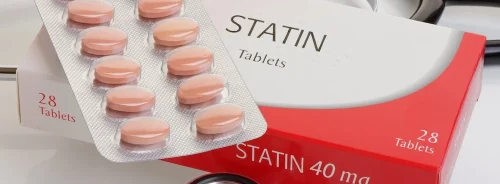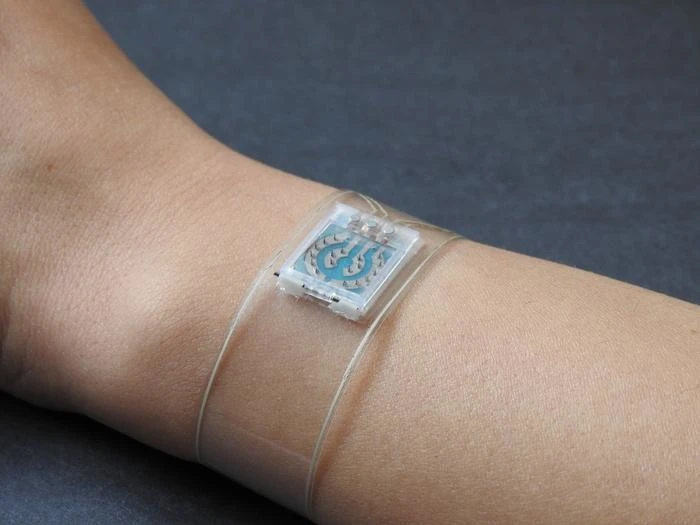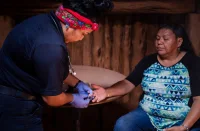A new wearable wristband could transform diabetes management by continuously tracking not just glucose, but also chemical and cardiovascular signals that affect disease progression and overall health. The technology was recently reported in Nature Biomedical Engineering.
The flexible wristband uses a microneedle array that painlessly samples interstitial fluid beneath the skin, measuring glucose, lactate, and alcohol in real time with three different enzymes embedded in the tiny needles. Designed for easy replacement, the microneedle array can be swapped out to tailor wear periods, reducing the risk of allergic reactions or infection while supporting long-term use.
Alongside chemical sensing, the wristband integrates an ultrasonic sensor array to measure blood pressure and arterial stiffness, while ECG sensors capture heart rate directly from wrist pulses. These physiological signals are important indicators of cardiovascular risk, which is often elevated in people with diabetes but rarely monitored continuously outside of a clinical setting.
Comprehensive and effective management of diabetes requires more than just a single glucose reading. By tracking glucose, lactate, alcohol, and cardiovascular signals in real time, this pain-free wristband can help people better understand their health and take early action to reduce diabetes risk.
The system is the result of collaboration between research groups led by Joseph Wang and Sheng Xu, professors at UC San Diego’s Jacobs School of Engineering. Wang’s lab specialises in wearable devices for simultaneous chemical biomarker monitoring, while Xu’s lab focuses on wearable ultrasound sensors for cardiovascular monitoring. By combining their expertise, the teams created a single wearable wristband capable of continuously measuring both chemical and cardiac signals in real time.
A smart device linked to the wristband displays live data streams, including blood pressure, heart rate, arterial stiffness, glucose, alcohol, and lactate levels. This allows users to see how daily activities, like meals, alcohol consumption, or exercise, affect their body in real time, providing personalised insights into their metabolic and cardiovascular responses.
In testing, the wristband’s glucose readings closely matched results from commercial blood glucose meters and continuous glucose monitors, while also capturing cardiovascular responses. Alcohol monitoring aligned with breathalyser data, and lactate tracking during exercise mirrored readings from a blood lactate meter. Throughout testing, the device provided continuous, simultaneous monitoring of blood pressure, heart rate, and arterial stiffness alongside chemical markers.
This integrated monitoring could give users a comprehensive snapshot of their physiology during everyday activities and help patients and clinicians identify concerning trends before they escalate, capturing cardiovascular risks that traditional glucose monitors alone might miss.
Next steps for the team include expanding the system to monitor additional chemical and cardiovascular markers and designing it to be powered by sweat or solar energy. The researchers also plan to integrate machine learning algorithms to analyse the large volumes of personal health data collected by the device, enabling even more personalised health management.
Source: University of California - San Diego
Image Credit: An-Yi Chang










